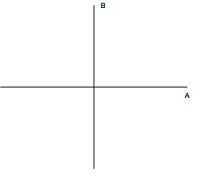Reference no: EM131109342
2008 Honors Exam in Complex Analysis
Part I - Real Analysis
1. Find a metric d(·, ·) on the real line R that makes R into a bounded set: i.e. there is some M > 0 such that d(x, y) ≤ M for any x, y ∈ R. Verify that d is in fact a metric.
2. Let A be the line segment {(x, 0) : -1 < x < 1 } and let B be the line segment {(0, y) : -1 < y < 1}. Suppose that f: A ∪ B → A is a continuous function (view A ∪ B and A as subsets of the plane, with its usual metric). Prove that f cannot be one-to-one.

3. Suppose that X is a subset of a metric space E. Define the following number:
α(X) = inf(δ : X can be covered by finitely many open balls in E of radius δ }.
a) Show that, if X is compact, then α(X) = 0.
b) Show that, if X is not closed, X need not be compact even if α(X) = 0.
(If E is complete and X is closed, then α(X) = 0 if and only if X is compact. This is a version of the so-called Bolzano-Weierstrass theorem. The function α(X) is called a measure of noncompactness.)
4. If we equip the set E of all continuous functions f: [0, 1] → R with the metric
d(f, g) = maxx∈[0,1]|f(x) - g(x)|,
E becomes a complete metric space. Let X be the closed unit ball in this space:
X = {continuous functions f: [0, 1] → R such that |f(x)| ≤ 1 for all x ∈ [0, 1]}.
Show that α(X) = 1, where α is as in problem 3. Conclude that X, while closed and bounded, is not compact.
5. Suppose that f: R → R is a continuous function. Choose and fix some closed interval [a, b]. For each k ∈ N, define the function
gk(x) = k x-(1/k)∫xf(t) dt.
Show that each gk(x) is differentiable for all x, and that gk → f uniformly on [a, b] as k → ∞. You may use the fundamental theorem of calculus.
Part II - Complex Analysis
6. Find a meromorphic function f on C with the feature that, if γ is any smooth closed curve intersecting neither the point a = 1 + 0i or b = -1 + 0i in the complex plane,
∫γ f dz
is the number of times that γ winds around a plus the number of times that γ winds around b (both in the positive - i.e. counterclockwise - direction).
7. Prove the Casorati-Weierstrass Theorem: Suppose f has an isolated essential singularity at p. Then the image of any neighborhood of p under f is dense in C. Otherwise put, given w ∈ C, there is a sequence {zn} converging to p such that {f(zn)} converges to w. Do not use the Picard theorems. (Hint: imagine that the image is not dense. This means that there is some w such that the function f(z) - w has modulus greater than some for z near p; this in turn implies that
1/f(z) - w is bounded near p.)
8. Suppose that a sequence {fk} of analytic functions converges normally (i.e. uniformly on compact subsets) to f on a domain D ⊂ C, and that fk(z) ≠ 0 for every k ∈ N and every z ∈ D. Prove that f must either have no zeros or must be identically zero.
9. Let H be the upper half plane: H = {a + bi : b > 0}. Let f: H → H be an analytic function such that f(i) = i. Suppose that b and c are two real numbers greater than 1 and that f(bi) = ci. Show that c ≤ b.